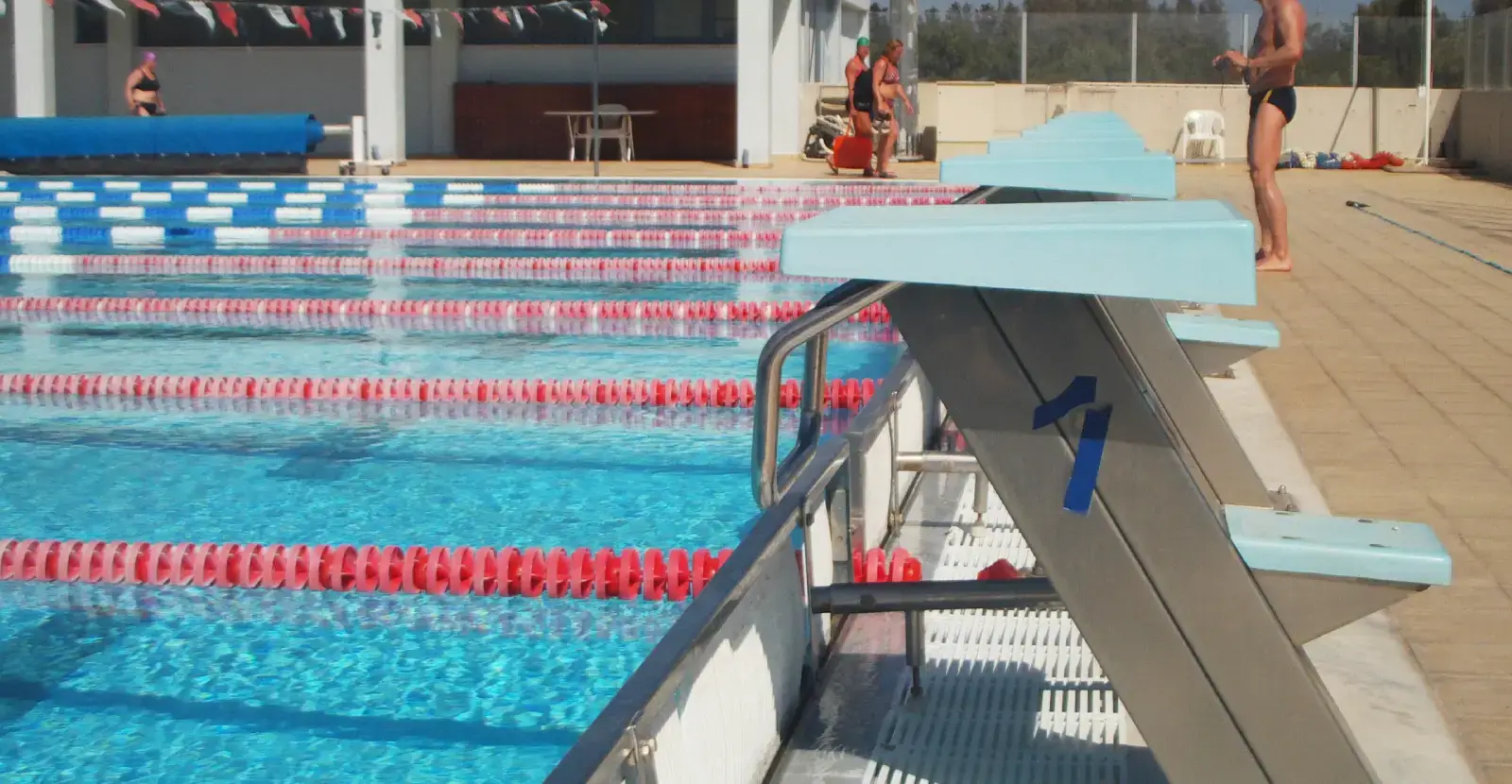THE COMPLETE HANDBOOK OF SWIMMING STARTS AND TURNS
THE COMPLETE HANDBOOK OF SWIMMING STARTS AND TURNS
Races are won and lost on the walls. A powerful start and a fast turn are your greatest weapons for dropping time, allowing you to carry momentum through every length of the pool.
This guide provides a complete collection of our best lessons on starts and turns. Whether you’re learning your first dive or refining your individual medley transitions, these tips will help you move faster and more efficiently.
Dive Into: Our Complete Starts & Turns Guide
Mastering the Dive (Block Start)
The start is your first opportunity to establish speed. These lessons break down every component of a powerful and efficient dive for freestyle, butterfly, and breaststroke.
- Lesson 1: The Perfect Starting Position
- Lesson 2: Progressing to a Standing Dive
- Lesson 3: Track Start vs. Grab Start (🎥 Watch Video)
- Lesson 4: The Track Start: Which Foot Forward?
- Lesson 5: How to Explode Off the Block
- Lesson 6: The Javelin Entry and Breakout
- Lesson 7: Advanced Track Start Technique (🎥 Watch Video)
- (Backstroke start lessons are coming soon!)
Mastering the Turn
Don't let the walls slow you down. A fast turn is a skill that pays off on every single lap. These lessons cover the techniques for all strokes.
Flip Turns (Freestyle & Backstroke)
- Lesson 1: The Body Position and Approach
- Lesson 2: How to Execute the Flip (🎥 Watch Video)
- Lesson 3: The Push-Off and Breakout
Open Turns (Breaststroke, Butterfly & Individual Medley - IM)
Frequently Asked Questions
What's more important for a faster swim: the start or the turn?
Both are critical, but in a multi-lap race, the turns offer the most opportunity for improvement. A great turn allows you to carry speed into and out of the wall, while a slow turn kills your momentum on every lap.
What is the difference between a flip turn and an open turn?
A flip turn is used in freestyle and backstroke and involves a forward somersault. An open turn is used in breaststroke and butterfly and requires a two-hand touch on the wall before turning.
I'm afraid of diving. What's the best way to start?
Start with the basics. The first step is a simple sitting dive from the edge of the pool. This teaches you the correct head and arm position for a safe, streamlined entry without the fear of being high up on a starting block.
How do I get more power off the wall?
Power comes from a strong leg drive and a tight streamline. For all turns, plant your feet firmly on the wall with your knees bent, then explode backward, keeping your arms squeezed behind your head in a rigid streamline to cut through the water.
What is a 'breakout' in swimming?
The breakout is the transition from your underwater glide to swimming on the surface after a start or turn. A good breakout is smooth and powerful, carrying the speed from your push-off directly into your first stroke.
How do I stop getting water up my nose on flip turns?
This is a very common problem. The key is to gently and continuously exhale through your nose during the entire somersault. This stream of air creates a pressure barrier that prevents water from entering.
What is the 'IM turn' and why is it different?
An Individual Medley (IM) turn is the transition between two different strokes, like from backstroke to breaststroke. They have specific rules and require unique techniques, like the crossover turn, that are different from a standard single-stroke turn.
What's the most important part of the backstroke start?
The most critical part of a modern backstroke start is the underwater dolphin kicking phase. After pushing off the wall, you should hold a tight streamline and execute several powerful dolphin kicks to maximize your speed before surfacing.



















